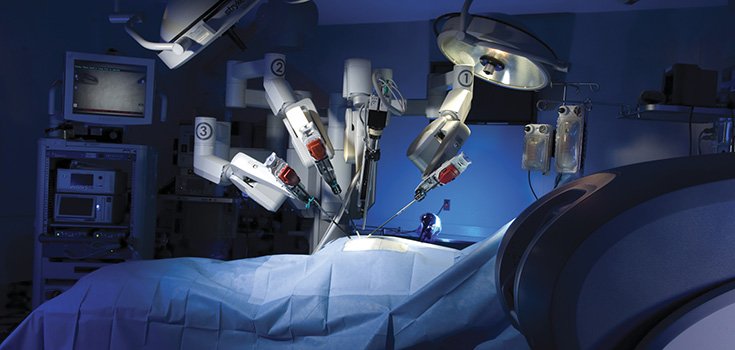Robotic Surgical Systems Linked to 144 Deaths, 1,000+ Injuries in 14 Years

(Natural Society) In the last 14 years, at least 144 people have died and more than 1,000 have been injured in the U.S. as a result of undergoing robotic surgery. [1]
The injuries, many of them fatal, were the result of broken instruments falling into patients’ bodies, electric sparks burning patients’ tissues, and system errors making surgical procedures take longer than planned.
There have even been reports of a robotic hand that wouldn’t let go of tissue grasped during surgery, and a robotic arm smacking a patient in the face as she lay on the operating table. [1]
The study, conducted by researchers at the University of Illinois at Urbana-Champaign, the Massachusetts Institute of Technology and Chicago’s Rush University Medical Center, states:
“Despite widespread adoption of robotic systems for minimally invasive surgery, a non-negligible number of technical difficulties and complications are still being experienced during procedures.”
The researchers wrote:
“Adoption of advanced techniques in design and operation of robotic surgical systems may reduce these preventable incidents in the future.”
Why Robotic Surgery, Anyway?
Robotic surgery is intended to reduce infection and help patients heal more quickly, but surgeons have complained that the robots are sometimes too powerful for simple procedures. What’s more, many doctors have complained that they didn’t receive adequate training or were pressured by the manufacturer to start performing robotic surgery before they felt comfortable. Although surgeons are trained in how to use the machine, they are not trained in how to use it for specific operations. [2]
A doctor and a health policy analyzer wrote in an essay published in 2010 in the New England Journal of Medicine that surgeons must do at least 150 procedures to become adept at using the robotic system. [2]
This most recent report found that there were 144 deaths, 1,391 injuries, and 8,061 device malfunctions, and more than 1.7 million robotic procedures performed from January 2000 to December 2013. The numbers were based on reports submitted by hospitals, patients, device manufacturers, and others to the FDA, and could actually be higher. [1]
- There were 1,166 cases of broken/burned parts falling into patients’ bodies, which contributed to 119 injuries and one death.
- Uncontrolled movements and spontaneous powering on/off of the machines accounted for 52 injuries and two deaths.
- Electrical sparks, unintended charring, and damaged accessory covers were linked to 193 injuries, including the burning of body tissues.
- Finally, the loss of quality of video feeds and/or reports of system error codes caused another 41 injuries and one death.
Until 2007, the number of reports remained fairly constant, but the ever-increasing use of robotic surgical systems has substantially increased the number of incidents in the years since.
The researchers noted in the report that when problems do occur, patients whose surgery involves their heart, lungs, head and/or neck are several times more likely to die than patients injured during gynecological or urinary procedures. [1]
[1] BBC
[2] Daily News
Featured image courtesy of Ohio State University – Department of Urology

That’s pretty good. I don’t think the author was advocating (at least not completely) for the abandonment of robots. However, it’s good to at least be aware. It would have been nice for her to do a comparative overview in a manner similar as you had done.
If you ask me, do your best to not end up under the knife of either. But if it does come down to a robot, make sure you’ve seen the latest inspection report and let the doctor know you’re aware of the issues.